Today’s video shows how the Montgomery County Maryland Recycling Facility in suburban Washington, DC, serves as one of the first links in the recycle-reuse chain. It receives more than 80,000 tonnes of mixed plastic, aluminium and other recyclable materials each year. There is some clever machinery helping sort and separate, but it’s actually quite tragic to see people paid to pluck out scraps of paper from conveyor belts of mixed materials. It doesn’t seem such a huge leap up from the even more tragic lives of the children who work and live on landfill sites in the developing world sifting through waste to find valuable scraps of metal and other substances.
Month: April 2012
Holistic chemophobia
What do you make of a tweet like this?
“Become very aware of where chemicals are present in your life and do what you can to minimise them.”
It comes from DrLibbyLive (Libby Weaver). Her bio says she’s a “holistic nutrition specialist” and her website tells us she completed her PhD examining biochemical and nutritional factors in children with autism at The University of Newcastle, Australia.
So, is it the oxygen, water, amino acids, proteins, sugars, peptides, vitamins, polyphenols etc of which we should become “very aware”? Or, maybe it’s the stuff from which trees are made, or perhaps the oceans, the air, the plants, the animals, the earth, the stars, the planets? I cannot tell from her tweet.
I suspect she means nasty, synthetic chemicals. But, synthetic would include life-saving drugs, food-producing fertilisers, polymers, plastics and the countless other materials that give us the modern, comfortable lifestyle, homes, shops, and hospitals. Those synthetic chemicals also give us the computer factories and the computers they make that allow us to twitter about “chemicals”.
Actually, she might mean chemicals like snake venom, aflatoxin, strychnine, cyanide. I cannot tell as she doesn’t qualify her tweet she just warns us about “chemicals” in general and that we should minimise them.
A few others spotted the good doctor’s comments and made constructively sarcastic responses. Among them scientist Dr Darren Saunders, Nature’s Stuart Cantrill, cancer researcher Daniel Mould and others. So, who would you trust to comment on chemistry, someone who tacks “holistic” in front of a job description or straight-talking scientwists?
173 Climate myths debunked and ready to tweet
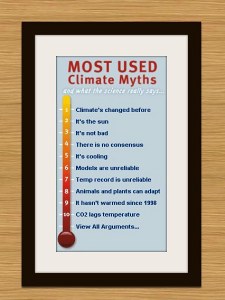 Here is a summary of global warming and climate change myths, 173 of them. The default order is sorted by recent popularity versus what science says. You can click each statement to get a more detailed description of the evidence against each myth. In the default format each item is ready to tweet when you’re faced with a denialist trotting out the usual: “CO2 lags temperature”, “glaciers are growing”, “there is no consensus” nonsense.
Here is a summary of global warming and climate change myths, 173 of them. The default order is sorted by recent popularity versus what science says. You can click each statement to get a more detailed description of the evidence against each myth. In the default format each item is ready to tweet when you’re faced with a denialist trotting out the usual: “CO2 lags temperature”, “glaciers are growing”, “there is no consensus” nonsense.
Arguments from Global Warming Skeptics and what the science really says.
Protein degradation revelation
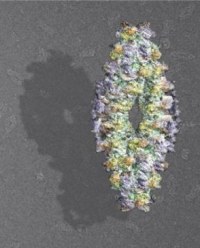 The mighty analytical technique of X-ray crystallography has been used to investigate the protein machinery that medical researchers say goes awry in uncontrolled or inaccurate degradation of cellular proteins. The research offers new clues on how cancer or Alzheimer’s disease might develop.
The mighty analytical technique of X-ray crystallography has been used to investigate the protein machinery that medical researchers say goes awry in uncontrolled or inaccurate degradation of cellular proteins. The research offers new clues on how cancer or Alzheimer’s disease might develop.
More in my SpectroscopyNOW column this week.
In Search Of Schrodinger’s Cat
 John Gribbin has updated his classic book to demystify quantum mechanics for a new generation. The book, originally published in 1984 reminds us that Schrodinger didn’t like the probabilistic world his science had wrought. Indeed, the parable of Schrodinger’s Cat was created to lampoon the notion that something could be both dead and alive simultaneously and which state was real only becomes apparent when we open the box.
John Gribbin has updated his classic book to demystify quantum mechanics for a new generation. The book, originally published in 1984 reminds us that Schrodinger didn’t like the probabilistic world his science had wrought. Indeed, the parable of Schrodinger’s Cat was created to lampoon the notion that something could be both dead and alive simultaneously and which state was real only becomes apparent when we open the box.
The new edition of In Search Of Schrodinger's Cat by John Gribbin is available on amazon and elsewhere, of course.
Also out now, is Gribbin’s fascinating biography of the great man himself – Erwin Schrodinger and the Quantum Revolution. Schrödinger was an Austrian physicist and recipient of the Nobel Prize in Physics in 1933. Gribbin takes us into the heart of the quantum revolution and tells the story of a scientist who arrived at Oxford to take up his chair with both wife and mistress in tow…
Fragile Earth? There’s an app for that
See the world change in front of your eyes with the Fragile Earth app for iPad. Essentially, it’s an interactive photo gallery that gives a bird’s-eye view of 73 natural and human locations around the world as they are now, and with a swipe, as they were before climate change, urbanization and nature’s raw power affected them.
The app launches today from publisher HarperCollins, in partnership with Aimer Media, and the publicity blurb claims that it, “is set to become the definitive reference guide for all those interested in science, nature, photography and landscape.” Looks good to me. Cheap at launch, slightly more expensive later. Released just in time for Sunday’s Earth Day, obviously.
With the app, you can compare the town of Las Vegas in 1973 with its modern explosive metropolis, view the consistent deforestation and urbanization of Bolivia, witness lakes being created by melting glaciers in Peru and view before and after images of erupted Mount St. Helens and the aftermath of Hurricane Katrina.
Holland T Ennyson
 I am a Brit but back in 1988 I worked and travelled as a student in the US. We rented a car and drove from the east coast to the west and back. We “did” 20+ states and after a near-miss car crash I was musing with my fellow traveller on what to do after University. I said I’d probably become an author and having passed an exit sign for Holland and Tennyson in Indiana (I think it was), I came up with the pseudonym Holland T. Ennyson just in case I fancied writing romantic fiction, it seemed to fit the Mills & Boon type style…
I am a Brit but back in 1988 I worked and travelled as a student in the US. We rented a car and drove from the east coast to the west and back. We “did” 20+ states and after a near-miss car crash I was musing with my fellow traveller on what to do after University. I said I’d probably become an author and having passed an exit sign for Holland and Tennyson in Indiana (I think it was), I came up with the pseudonym Holland T. Ennyson just in case I fancied writing romantic fiction, it seemed to fit the Mills & Boon type style…
Anyway, with my imminent book deal (science, not rom-com, sorry), I was relaying this tale to Facebook friends and one of them came back with a virtual news clipping from the Canyon Country Zephyr (PDF), which tells an eerily familiar tale of a photographer looking for a pseudonym and picking two names off an exit sign in Indiana, Holland Tennyson. The photographer is Michael Brohm and his pen name became simply Holland Tennyson, without the capital break I created in mine. A weird coincidence or is this just an incredibly obvious way to devise a pseudonym of which I was unaware at the age of 22?
I plotted an approximate road trip route, which took us from Washington DC southwest to Memphis, Dallas, through Albuquerque, on to the Grand Canyon at Flagstaff, then through Las Vegas, Death Valley and on to San Francisco. Return trip headed (quickly) through Reno then on to Denver and Boulder, Colorado through the Rockies, speeding East back to DC with a quick dayfiller in Delaware before taking a Greyhound back to NYC and then from JFK back to LHR…
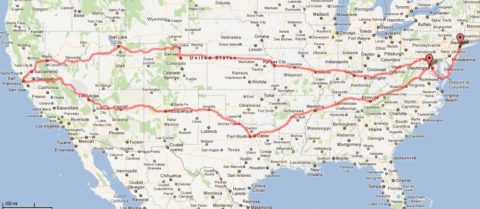
Meanwhile, having seen Black Eyed Peas musician will.i.am (real name: William James Adams, Jr.) in action on the BBC singing scam The Voice, who is also some kind of ambassador/advisor for Intel, I’m toying with the idea, not of calling myself Holland, but of rebranding as Dav:ID, what do you think?
Stay active avoid Alzheimer’s
I’m always loathe to report on small studies that make big claims, but there seem to be so many proven benefits to staying active throughout one’s life that the latest research due to be published in the journal American Academy of Neurology is worthy of a mention. Researchers at Rush University Medical Center shows that daily physical activity may reduce the risk of cognitive decline and developing Alzheimer’s disease even in people over the age of 80 years.
“The results of our study indicate that all physical activities including exercise as well as other activities such as cooking, washing the dishes, and cleaning are associated with a reduced risk of Alzheimer’s disease,” says lead author Aron Buchman of Rush.
The team monitored daily activity among 716 seniors without apparent dementia with an average age of 82 using an actigraph during a period of ten days. Over the course of 3.5 years follow-up, the recorded 71 cases of Alzheimer’s disease but found that in the lower 10% of daily physical activity (as measured by that ten day test period) the least active had a relative risk 2.3 times that of the active volunteers in the top 10%. So, yes it’s a small-scale study, it determined activity only over a ten-day period as baseline and assumed that the participants maintained that level of activity over the 3.5 average follow-up period. It also ignores any prior lifetime activity and many other factors that could affect risk.
Nevertheless, the research is somewhat encouraging and if it persuades seniors to stay active then they will gain from the other benefits of physical activity in their latter years too. Previously, Buchman and colleagues have correlated body mass index and blood haemoglobin levels with Alzheimer’s risk in the elderly.
Toxic herbal remedy
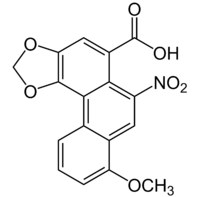 Yet another reason to avoid spurious herbal tonics. An informatics approach to toxic epidemiology has revealed that aristolochic acid (AA) causes kidney failure and upper urinary tract cancer (UUC) in individuals exposed to the toxin. AA is found in species that have been used in herbal medicine for centuries. Who says natural is all good?
Yet another reason to avoid spurious herbal tonics. An informatics approach to toxic epidemiology has revealed that aristolochic acid (AA) causes kidney failure and upper urinary tract cancer (UUC) in individuals exposed to the toxin. AA is found in species that have been used in herbal medicine for centuries. Who says natural is all good?
Details of how the research began in Belgium and reached Taiwan by way of The Balkans in this week’s SpectroscopyNOW.
Cocaine antidote
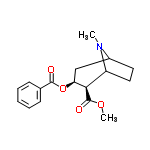 A press release just in from the American Chemical Society describes how scientists are reporting development and successful testing in laboratory mice of a “cocaine antidote”. The substance and its effects are described in the journal Molecular Pharmaceutics. The researchers refer to it as a “passive vaccine”, which apparently reverses the motor impairment, seizures and other dangerous symptoms of cocaine overdose.
A press release just in from the American Chemical Society describes how scientists are reporting development and successful testing in laboratory mice of a “cocaine antidote”. The substance and its effects are described in the journal Molecular Pharmaceutics. The researchers refer to it as a “passive vaccine”, which apparently reverses the motor impairment, seizures and other dangerous symptoms of cocaine overdose.
Cocaine (benzoylmethylecgonine) is a tropane alkaloid obtained from the leaves of the coca plant as a colourless crystalline substance. The name derives from “coca” to which is added the suffix -ine representing alkaloids chemical speaking. Cocaine is a central nervous system stimulant, appetite suppressant, and a topical anaesthetic. It is more specifically a serotonin—norepinephrine—dopamine reuptake inhibitor (also known as a triple reuptake inhibitor) and is commonly used as a drug of abuse. It mediates functionality of those three neurotransmitters affecting the mesolimbic reward pathway in the brain.
![]() Treweek, J., & Janda, K. (2012). An Antidote for Acute Cocaine Toxicity Molecular Pharmaceutics, 9 (4), 969-978 DOI: 10.1021/mp200588v
Treweek, J., & Janda, K. (2012). An Antidote for Acute Cocaine Toxicity Molecular Pharmaceutics, 9 (4), 969-978 DOI: 10.1021/mp200588v